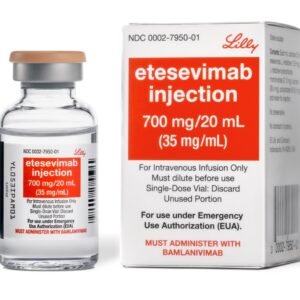Isoniazid Tablets
Effects and efficacy:
Isoniazid is used in combination with other anti-tuberculosis drugs and is suitable for the treatment of various types of tuberculosis, including tuberculous meningitis and other mycobacterial infections. Isoniazid alone is suitable for the following groups to prevent various types of tuberculosis: children and adolescents who have close contact with newly diagnosed infectious pulmonary tuberculosis patients and have positive tuberculin test; those with strong positive tuberculin test; patients who are receiving immunosuppressive drugs or long-term hormone therapy, and those with certain blood diseases or mononuclear-phagocyte system diseases (such as leukemia, Hodgkin’s disease), diabetes, uremia, silicosis, etc., who have positive tuberculin test; children under 5 years old who have not been vaccinated with BCG and have positive tuberculin test; those who are known or suspected to be infected with human immunodeficiency virus (HIV) and have positive tuberculin test; or those who have close contact with active pulmonary tuberculosis patients and have negative tuberculin test.
Dosage and Administration:
Adults can generally take 300 mg orally on an empty stomach daily; children can take 5 mg/kg per day (recommended by WHO and the UK) and 10-20 mg/kg per day (recommended by the US) according to their body weight. my country tends to prefer the latter. Please follow the doctor’s advice for details. WHO recommends intermittent therapy: 10 mg/kg, 3 times a week, or 15 mg/kg, 2 times a week; the UK recommends 15 mg/kg, 3 times a week; the US recommends 15 mg/kg for adults, 2-3 times a week, and 20-40 mg/kg for children, 2-3 times a week (maximum 900 mg). Patients with impaired liver function or moderate to severe renal insufficiency should reduce the dose. Please follow the doctor’s advice for details. For acute hematogenously disseminated pulmonary tuberculosis or meningitis, 10-30 mg/kg can be given daily. Please follow the doctor’s advice for details. For those who cannot take it orally, the same dose can be used for intramuscular injection, or added to 20-40 ml of 5% glucose injection and slowly injected intravenously, or added to 250 ml or 500 ml of 5% glucose injection for drip. It can also be injected intrathecally or intrathoracically (for local infection), 25-50 mg/day for adults; 10-20 mg/day for children. Please follow the doctor’s advice for details. For the prevention of tuberculosis, 300 mg per day for adults, at least for half a year or even 1 year; 5-10 mg/kg per day for children, with a maximum daily dose of 300 mg. Please follow the doctor’s advice for details. Other uses Stye: Oral administration of 200 mg of this product 3 times a day, combined with vitamin B, for 7 consecutive days or 4-10 mg/kg per day, divided into 3 times, and vitamin B 30-60 mg per day at the same time. Please follow the doctor’s advice for details. Children’s hereditary chorea: Oral administration of 10-20 mg/kg per day, combined with vitamin B 100 mg per day, divided into 3 times, for a course of 4-25 months. Please follow the doctor’s advice for details. Glomerulonephritis: Oral administration of 50 mg 3 times a day, combined with prednisone 1 mg per day, for 14 consecutive days as a course of treatment. Please follow the doctor’s advice for details. Bacillary dysentery: 600 mg of this product per day, divided into 3 doses. Please follow the doctor’s advice for details. Whooping cough: 10-15 mg/kg of this product per day. Please follow the doctor’s advice for details. Erythema: 0.2g per dose, 3 times a day. Please follow the doctor’s advice for details.
Drug contraindications:
Allergic to this product is prohibited. Use with caution in patients with liver and kidney dysfunction
Related dosage forms:
Tablets, injection
Share:
Products
Our offers
Health Classification
Let us work together to protect precious health






























